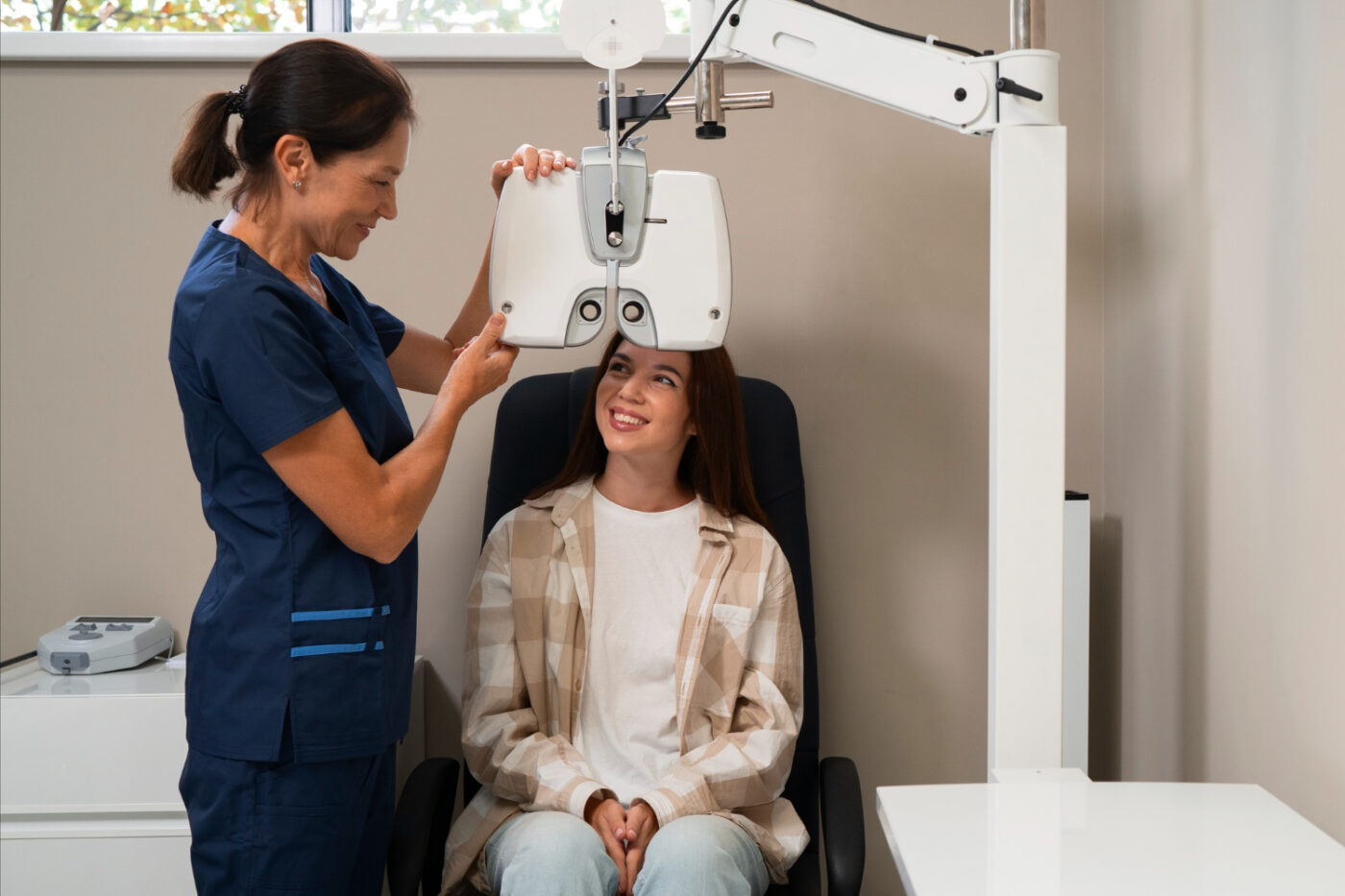Health Savings Accounts (HSAs) and Flexible Spending Accounts (FSAs) are valuable financial tools that can help individuals and families manage their healthcare expenses, including vision correction procedures like LASIK. These tax-advantaged accounts offer unique benefits and can significantly reduce the out-of-pocket costs for eligible medical expenses. Here, we’ll explore the key features of HSAs and FSAs.
What is a Health Savings Account (HSA)?
A Health Savings Account (HSA) is a tax-advantaged savings account that allows individuals with high-deductible health plans (HDHPs) to set aside money for qualified medical expenses. HSAs offer several benefits, including:
- Tax-deductible contributions: Contributions to an HSA are made pre-tax, which can lower your taxable income.
- Tax-free growth: Funds in an HSA can grow tax-free through investment.
- Tax-free withdrawals: For qualified medical expenses, including LASIK.
- Portability: HSA funds belong to the account holder and can be carried over from year to year, even if you change employers or health plans.
To be eligible for an HSA, you must be enrolled in a qualifying HDHP with a minimum deductible of $1,650 for individual coverage or $3,300 for family coverage (as of 2025). Additionally, you cannot be enrolled in Medicare or claimed as a dependent on someone else’s tax return.

What is a Flexible Spending Account (FSA)?
A Flexible Spending Account (FSA) is a tax-advantaged account that allows employees to set aside a portion of their pre-tax earnings to pay for eligible medical expenses. Unlike HSAs, FSAs are owned and managed by your employer, and the funds must be used within the same plan year or they are typically forfeited (with some exceptions).
The key features of an FSA include:
- Pre-tax contributions: Contributions to an FSA are deducted from your paycheck before taxes are withheld, which can lower your taxable income.
- Use-it-or-lose-it: FSA funds must be used within the plan year, with some exceptions for a limited carryover or grace period.
- Employer-owned: FSAs are owned and managed by your employer, and the funds cannot be carried over to a new employer.
There is no requirement to be enrolled in a specific health plan to participate in an FSA, and the maximum annual contribution is set by the IRS (currently $3,200 for 2024).
Eligible Expenses for HSAs and FSAs
One of the primary differences between HSAs and FSAs is the range of eligible expenses. HSAs can be used to pay for a wider variety of qualified medical expenses, including:
- Deductibles, copayments, and coinsurance: Costs associated with your HDHP.
- Prescription medications: Drugs prescribed by a licensed physician.
- Certain over-the-counter (OTC) products: OTC medications and medical supplies, such as bandages, contact lens solutions, and more.
- Dental and vision care: Expenses like routine check-ups, fillings, LASIK, glasses, and contact lenses.
- Long-term care premiums: Premiums for qualified long-term care insurance.

In contrast, FSAs have a more limited scope of eligible expenses, which typically include:

- Deductibles, copayments, and coinsurance: Costs associated with your health plan.
- Prescription medications: Drugs prescribed by a licensed physician.
- Certain over-the-counter (OTC) products: OTC medications, such as pain relievers, allergy medications, and first-aid supplies.
- Dental and vision care: Expenses like routine check-ups, LASIK, fillings, glasses, and contact lenses.
It’s important to note that the eligibility of expenses can vary, and it’s always best to consult your plan documents or a tax professional to ensure that any expenses you wish to pay for with your HSA or FSA are considered qualified.
LASIK as an Eligible Expense for HSAs and FSAs
One of the significant advantages of both HSAs and FSAs is that they can be used to pay for LASIK eye surgery, a popular vision correction procedure. Here’s how LASIK fits into the eligible expenses for these accounts:
LASIK and HSAs
HSAs can be used to pay for LASIK surgery as it is considered a qualified medical expense. The benefits of using an HSA for LASIK include:
- Tax savings: Since HSA contributions are tax-deductible and withdrawals for LASIK are tax-free, you can save significantly on the procedure.
- Flexibility: You can accumulate funds in your HSA over multiple years to save for LASIK, as the funds roll over annually.
- Investment potential: If you invest your HSA funds, you could potentially grow your savings to cover LASIK costs.
LASIK and FSAs
FSAs also cover LASIK as an eligible expense. Advantages of using an FSA for LASIK include:
- Immediate availability of funds: Unlike HSAs, the full amount you elect to contribute to your FSA is available for use at the beginning of the plan year, even if you haven’t made all the contributions yet.
- Tax savings: FSA contributions are pre-tax, reducing your overall taxable income.
- Potential for lower out-of-pocket costs: By using pre-tax dollars, you effectively reduce the cost of LASIK.
It’s important to note that while both HSAs and FSAs can be used for LASIK, the timing and planning may differ due to the accounts’ unique characteristics.
HSA vs. FSA: Which One is Right for You?
When deciding between an HSA and an FSA, it’s essential to consider your healthcare needs, tax situation, and financial goals. Here are some factors to consider:
Eligibility and Contribution Limits
HSAs have specific eligibility requirements related to your health plan, while FSAs are generally available to employees regardless of their health plan. Additionally, HSA contribution limits are higher than FSA limits, which may make them more appealing for individuals with significant medical expenses.
Rollover and Portability
HSA funds can be carried over from year to year and remain with the account holder, even if they change employers or health plans. FSA funds, on the other hand, are typically subject to a use-it-or-lose-it policy, with limited exceptions for carryover or grace periods, which may require more immediate planning for LASIK.
Tax Benefits
Both HSAs and FSAs offer tax advantages, but the specifics differ. HSA contributions are tax-deductible, and withdrawals for qualified medical expenses are tax-free. FSA contributions are also pre-tax, but the funds must be used within the plan year or they are forfeited.
Healthcare Needs
If you have predictable, ongoing medical expenses, an FSA may be a better fit, as you can set aside a specific amount to cover those costs. However, if you have a high-deductible health plan and expect to have significant medical expenses, an HSA may be more advantageous due to its higher contribution limits and the ability to invest the funds for long-term growth.
Timing of LASIK Procedure
If you’re planning LASIK in the near future, an FSA might be beneficial due to the immediate availability of funds. For longer-term planning, an HSA could be advantageous.
Planning for LASIK with HSAs and FSAs
To effectively use your HSA or FSA for LASIK:
- Research costs: Get estimates from reputable LASIK providers.
- Plan contributions: Adjust your HSA or FSA contributions to cover LASIK expenses.
- Consider timing: For FSAs, plan the procedure within your plan year. For HSAs, you have more flexibility.
- Consult a tax professional: Ensure you’re maximizing tax benefits and following all regulations.
Ultimately, the choice between an HSA and an FSA will depend on your individual circumstances, healthcare needs, and financial goals. It’s advisable to consult with a financial or tax professional to determine the best option for your specific situation.
Health Savings Accounts (HSAs) and Flexible Spending Accounts (FSAs) are both valuable tools for managing healthcare costs and saving on taxes. By understanding the key differences between these two accounts, you can make an informed decision on which option best suits your needs. Whether you choose an HSA or an FSA, these tax-advantaged accounts can help you take control of your healthcare expenses and plan for a healthier financial future.

Find a LASIK Surgery Location Near You
We’re located nationwide – it’s easy to find a LASIK Vision Center near you.
References:
American Academy of Ophthalmology. (2023). LASIK - Laser Eye Surgery. Retrieved from https://www.aao.org/eye-health/treatments/lasik
Internal Revenue Service. (2023). Publication 969, Health Savings Accounts and Other Tax-Favored Health Plans. Retrieved from https://www.irs.gov/publications/p969
Walker, K. (2024). Rev. proc. 2024-25. https://www.irs.gov/pub/irs-drop/rp-24-25.pdf
American Refractive Surgery Council. (2023). LASIK Cost: Understanding Insurance, Financing, and Payment Options. Retrieved from https://americanrefractivesurgerycouncil.org/lasik-cost-understanding-insurance-financing-and-payment-options/
Categories:



